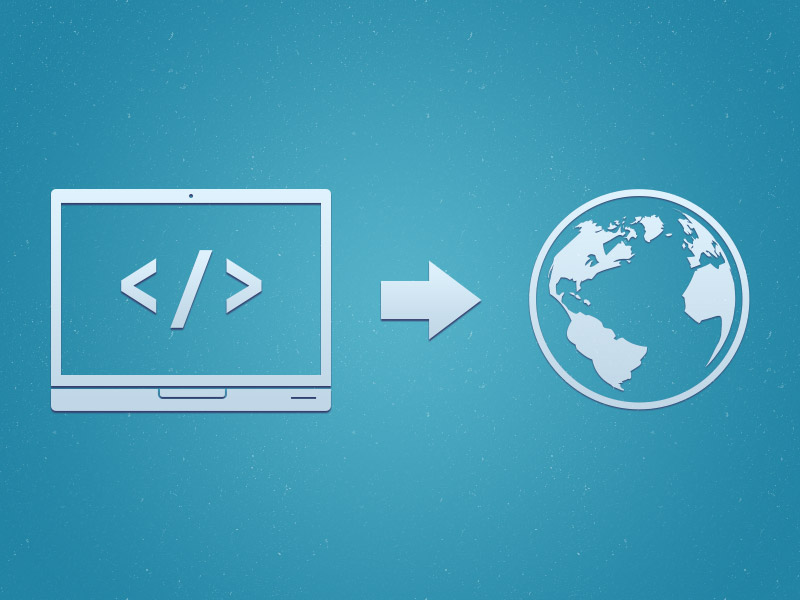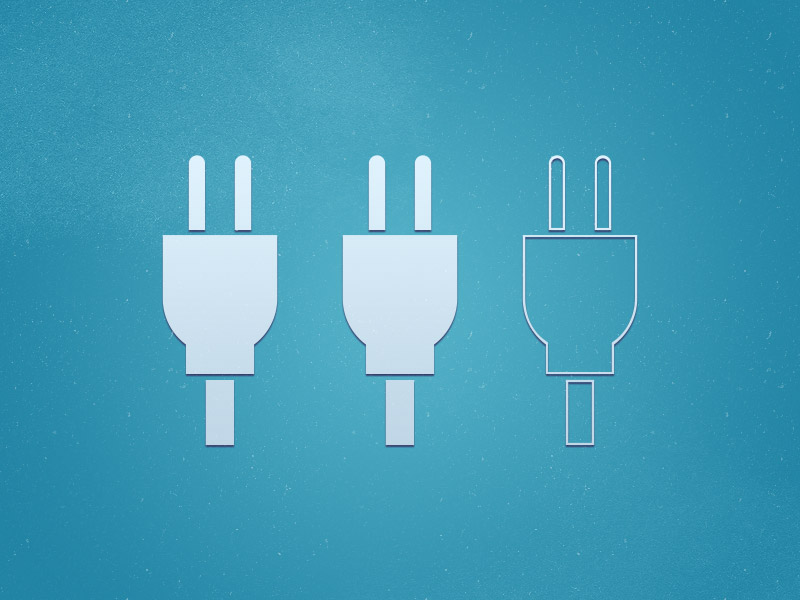
I’ve used WordPress for over 4 years now, and I love it to absolute bits, but I often get questions about WordPress, particularly at the beginner level. These include on where to start, understanding the basics of WordPress, getting the best out of the CMS, and pointers on building themes. Here, I’ll lay out some pointers for the intermediate WordPress developer, wanting to get into using WordPress and getting started on Theme Development.
A few little things you should know before you start
While it’s all very easy for someone to wake up one day and all of a sudden decide they want to do something radical and new in their work, it’s important to lay out what you should know already before delving into developing for Content Management Systems. While WordPress (and similar Content Management Systems) don’t require you to be hardcore in the knowledge of PHP, an understanding of HTML and CSS is essential before jumping into theme development, as well as knowing what PHP is; otherwise, you may get frustrated and lost taking on a number of languages at once. So, take it all one step at a time as to not overload yourself.
Now that we have that out of the way, let’s begin.
Develop Locally, not Remotely
What a lot of new WordPress developers tend to do at the very start is develop their site and their theme remotely. This is a bad idea as developing in the wild means your development can be seen as well as possibly vulnerable. Some beginners are also lured by using a “1 Click Install” on a remote server; which is unnecessary and can be troublesome, because some hosts can block you from getting the best out of WordPress.

The process should usually be develop locally, publish globally. The best way to achieve this easily is to install server management software on your computer you use for development, and install WordPress locally. If you’re a Mac user, install MAMP, and if you’re on Windows, install WAMP. From there, you can download the latest version of WordPress, and install it locally. Believe it or not, installing WordPress is incredibly easy. Just make a database, connect to that database via PHP, fill out the credentials, and go!
The Codex is your friend
The WordPress Codex is a massive online manual for using WordPress, Theme Development and Plugin Development. This is an incredible place to keep for reference, learn more for theme development, and for understanding how certain functions work. If you needed to look up a certain function, or how themes are held together, and even see what’s possible when developing, then this is the place to be.
Write your own themes!
I’ve always been a big believer in writing your own themes, because if you have a good grip on HTML and CSS, then this is what you should do. What a lot of beginners tend to do is take something like the default theme and only edit it slightly, or develop with a free theme that they feel suits their needs, only to get lost part of the way because of how big the chosen theme is. Themes you find can be good for a frame reference, or even as a parent theme, but if you want to be a WordPress Developer then you need to make your own! If you want to make your own theme, then you should start from scratch. You know what you want out of your theme, so you should work towards what you want, not what another theme wants you to. Where do you start?
Look up great articles online
There are no shortage of great articles online for WordPress development, some are simple to read and understand, others can be very in-depth but knowledgable. One of my favourites for learning WordPress theme development is Line25, as it has full tutorials on developing a WordPress theme from scratch, and they’re easy to read. Another great site is WPTuts, they have articles for all kinds of theme development, and even plugin development. They even have posts that have great pointers when developing themes!

CSS-Tricks also has great posts, and videos on WordPress. There’s also an amazing snippet library for all kinds of languages, including WordPress snippets you can find very useful as well as keep for reference. Smashing Magazine has an entire section fully dedicated to WordPress, and has great articles on Theme Development. There are a lot of websites out there with great articles on working with WordPress, so there’s no shortage of advice or solutions for when you develop themes.
Get to know the WordPress loop
The loop is a very important part of WordPress. It’s the most dynamic part of it and it’s essential to understand how it works, as it generates what WordPress is used for: posts. What the loop does is if the WordPress installation has posts in its database, then it will loop a number of posts, and the markup written is how it should be presented. Begin learning the loop and understand how important it is, as well as find out what you can achieve by manipulating it to get the best code out of your theme.
Read the support forums and research your issues
It’s no doubt that you will hit a few issues when working with WordPress, like certain errors you’re unaware of or didn’t expect, and unsure where to turn. The WordPress Support Forums can be a great place to start, or even so much as searching for your problem online should find an answer. Stack Overflow can also be a valuable resource for answers, as is Stack Exchange’s WordPress section. The great thing about WordPress is it also has a great developer community, sharing solutions and helping with certain issues, so you will more than likely find answers.
Limit the number of plugins you use
While WordPress plugins can solve a number of issues when developing your theme and site, there are a number of things you don’t need plugins for. One of the most easily abused things when developing themes is rather than research the solution, plugins get used instead. If it’s out of your reach to develop the solution yourself within your theme, then that’s when you should turn to plugins; otherwise, some research on the subject on how to develop the solution to the issue yourself shouldn’t go amiss. Some people just rely on plugins rather than code something themselves, even if it’s relatively simple; best avoided.

Chris Spooner has written great articles on ways to ease your load of WordPress, but also what plugins are essential to enhance and protect your WordPress site.
Keep your themes semantic, clean and organized
Your themes should be kept clean and organized, for ease of development and keeping your code together. Everything involved with your theme, including images, stylesheets, scripts, functions files, should be kept in your theme folder. A lot of beginners tend to put their CSS and similar files at the root of the site, instead of the theme folder. Your code should also be easy to read and understand for you; put in comments in your code, and keep it semantic, as well as avoiding bloat. Your theme should read in plain english when developing for ease of writing.
Practice!
It goes without saying that your skills will improve with practice, and WordPress development is no exception. It’s relatively easy to get to grips with, but over time, you may want to take on more advanced code, and really push what WordPress can do. The possibilities are many, wether it’s a portfolio, a blog, a magazine or even an online store, you can achieve a lot of things if you keep pushing your skills with WordPress. Keep it one step at a time, don’t overload yourself, follow top advice, and you’re sure to become a great WordPress developer.
Conclusion
So those are my pointers when it becomes to being a WordPress beginner. Anyone wanting to get into WordPress development has the potential of being a great WordPress developer if you get off to a good start. Here’s a brief summary of everything said here.
- Get to grips with HTML and CSS first, then delve into WordPress.
- Develop locally, not in the wild, and learn the ease of installing WordPress.
- Rely on the Codex for learning about WordPress.
- Always write your own themes; it easier than most people think! Also, read great tutorials, and posts that will guide you in the right direction.
- Keep your code, hierarchies, and tools organised. Also avoid putting too much arbitrary data in your projects.
- Finally, put your skills into practice, learn more and take everything one step at a time.
So there you have it! With all of these in mind, you should get a very good start on getting to grips with WordPress. Working with WordPress can be very challenging, but with these points in mind, you should be well on the way into becoming a a good WordPress developer, and make some very exciting websites.
6 Comments
Radu said on January 15, 2013
I’d also add “for the love of all that is holy, please hardcode as little as possible”. Which is good advice regardless of CMS, mind you. Good tips up there, especially about limiting the number of plugins used. The fewer, the better!
Iain MacDonald said on January 15, 2013
Thanks! And yes, hard coding should be limited to only so much. Some of this site has some hard coding, but only in one or two places where it’s not worth adding full PHP processing, making it load that tiny bit faster. :-)
Joyce said on January 15, 2013
These are some nice tips for those who want to start using WordPress! I gave my fellow students a quick course on WordPress theming a few months ago and they were surprised by how easy it was.
Iain MacDonald said on January 15, 2013
Excellent! It’s always good to see people jumping in and being surprised by how much easier than it looks from the outside. I see people avoiding development because it “looks” hard, but once they get to grips with the code it makes it easier to learn and do.
Steven Grant said on January 15, 2013
How do you resolve instances where neither a ‘page’ or ‘post’ suit your needs?
Iain MacDonald said on January 16, 2013
This is a bit advanced, but you can add Custom Post Types to your WordPress site. You can find plugins, or add one of your own, but under these custom types you can add your own fields for displaying information, and what tools can be shown as a default. You can also manipulate the default posts and page types to display different things, if needed.